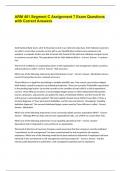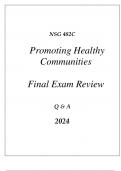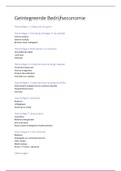College aantekeningen
Principles and Practice of Human Pathology (summary of most lectures)
- Instelling
- Radboud Universiteit Nijmegen (RU)
Detailed summary of the lectures in Principles and Practice of Human Pathology. The following lectures are included: 1.1 and 1.2 Pathology of Skin Tumours 1.7 and 1.8 Pathophysiology of Cervical Cancer 2.1 Anatomy and Physiology of the Endocrine System 2.2 Pathology of the Pituitary Gland 3...
[Meer zien]













